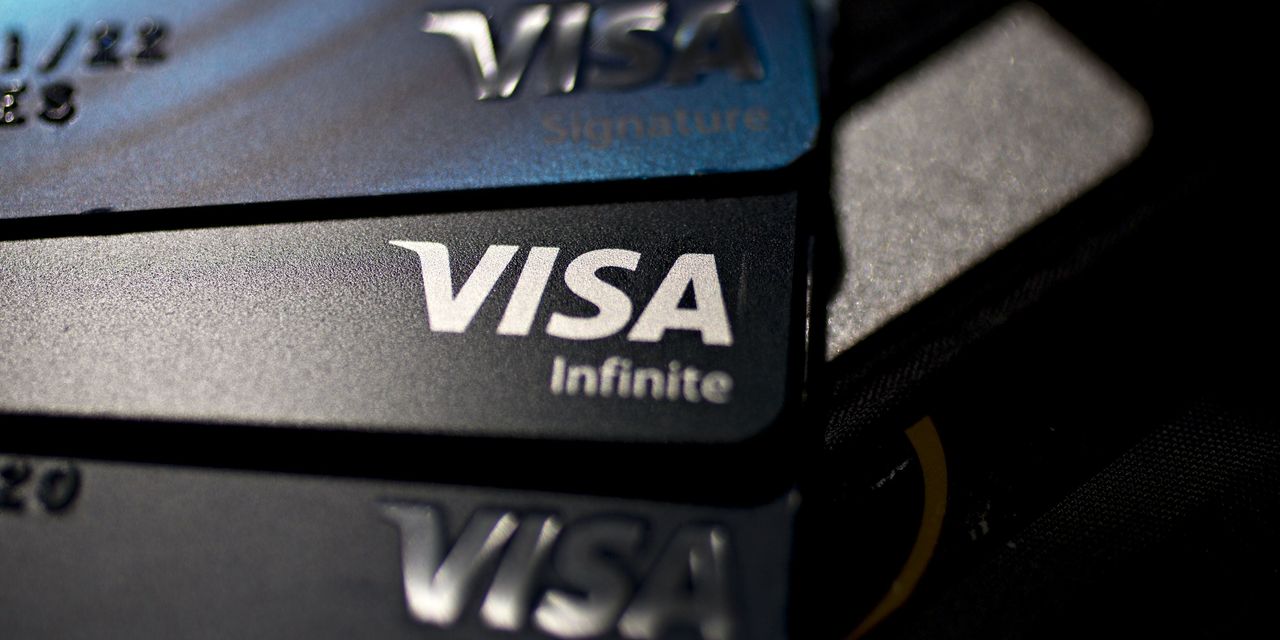
Lenders are again welcoming borrowers with less-than-pristine credit, a vote of confidence in the health of the U.S. economy and Americans’ finances.
An estimated 29.2 million general-purpose credit cards were issued to people with credit scores of 660 and below last year, according to projections from credit-reporting firm TransUnion, up from 20.4 million in 2020 and 26.3 million in 2019. That is generally the threshold where lenders view consumers as having fair, rather than good, credit.
Even subprime borrowers, a group shunned during the pandemic, are finding it easier to get credit.
Lenders issued roughly 11.6 million general-purpose credit cards to people with credit scores below 620 during the first nine months of 2021, according to the latest data by Equifax, up 43.5% from a year earlier and the highest for the period on record. (Equifax’s data goes back to 2010.) The aggregate spending limit on the cards rose 45% over the same period.
In the early months of the pandemic, lenders preparing for a tidal wave of missed payments tightened loan-approval standards, locking riskier borrowers out of the market for new credit. But government stimulus and expanded unemployment payments helped push down credit-card balances and kept defaults at bay.
Some 33% of banks reported somewhat easing their credit standards for card approvals during the three months through early October, according to the latest Federal Reserve senior loan officer survey, compared with about 4% a year earlier.
“The credit market is now more reminiscent of 2019—not the early stages of the pandemic,” said Paul Siegfried, credit-card and payments business leader at TransUnion. “Despite the increase in new accounts to subprime borrowers, we have observed that balances for subprime borrowers have remained relatively stable—a sign that consumers are not taking on too much risk.”
The loosening is reflected in credit-card interest rates, which have risen because lenders are issuing more cards to people with lower credit scores who are charged more to account for their higher risk of default.
The average annual percentage rate, or APR, on interest-charging credit cards climbed to a near-record high of 17.13% in the third quarter from 15.91% in the first quarter, according to the Federal Reserve, before slipping to 16.44% in November.
Credit-card APRs are typically based on the prime rate plus a margin set by lenders. The prime rate fell to 3.25% in March 2020 and hasn’t budged since, but margins have risen. Lenders tacked on an average 13.19 percentage points on interest-charging credit cards in November, up from 13.03 points a year earlier and 12.13 points two years earlier, according to an analysis of Fed data by WalletHub.com.
Lenders are embracing borrowers with lower credit scores to boost credit-card profitability, which fell in 2020 to the lowest level since 2009, according to the Fed.
Credit-card balances remain below their pre-pandemic levels, totaling $808.6 billion for general purpose and store cards as of November compared with $913 billion in January 2020, according to Equifax. Smaller balances generally mean lenders collect less interest income.
Balances have risen in recent months, issuers say, but many cardholders are still making larger-than-usual monthly payments. Lending to people with lower credit scores in a healthy labor market is one way banks can eke out higher profits without taking on too much extra risk.
“We are seeing much more appetite from issuers to go subprime,” said Odysseas Papadimitriou, chief executive of WalletHub.com. “They have gone more down market where the margins are fatter and the interest rates are higher.”
Write to AnnaMaria Andriotis at [email protected]
Copyright ©2022 Dow Jones & Company, Inc. All Rights Reserved. 87990cbe856818d5eddac44c7b1cdeb8
Appeared in the January 10, 2022, print edition as ‘Banks Lower Threshold To Obtain A Card.’








